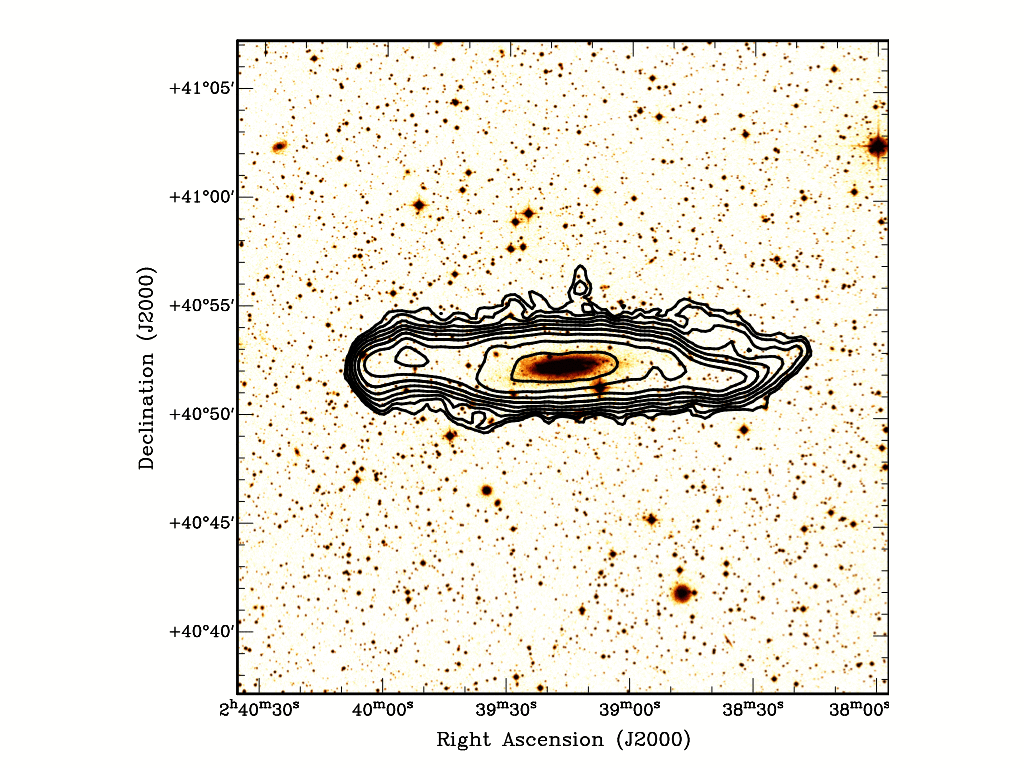Daily Image
10-08-2010Summer student project: HI accretion in NGC 1003
| Submitter: | John Allan |
| Description: | This summer I performed data reductions of NGC 1003 for the HALOGAS project, which aims to provide a statistically representative sample of cold hydrogen accretion in local spiral galaxies. Ten 12-hour WSRT observations were reduced using the MIRIAD software package and modeled with Gyula Jozsa's TiRiFiC program. NGC 1003 is a nearly edge-on spiral galaxy 11 megaparsecs distant from the Milky Way. The HI disk is both thick and extended. Its radius is four to five times that of the optical disk, and from the models we can infer that its scale height is about a kiloparsec (1/16 of the radial scale length). If you stacked 6 CDs on top of one another, they would have about the same ratio of height to diameter. The disk has a flat rotation curve at about 100 km/s. The image shows a comparison between an optical R-band image from the Digitized Sky Survey and contours of neutral hydrogen column density. In blue contours we show two small clouds and a large accretion complex that are kinematically distinct from the galaxy. Cloud 1 (C1) has a mass of approximately 200,000 solar masses, and Cloud 2 (C2) has a mass of about 330,000 solar masses. The total mass of the accretion complex (AC) is 2.8 million solar masses. These features are analogous to high- and intermediate-velocity clouds around the Milky Way. The HI distribution of the whole system is shown in black contours, with a total HI mass of 5.34 billion solar masses. At the east (left) end of the disk a large blob of gas is embedded in the disk. The blob may be a recently captured satellite of NGC 1003. Such a scenario could also account for the significant warp in the disk (most evident on the west side). |
| Copyright: | ASTRON |
| Tweet |  |
